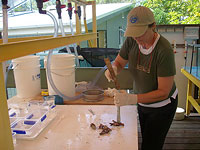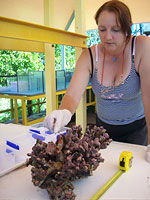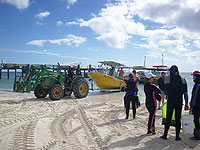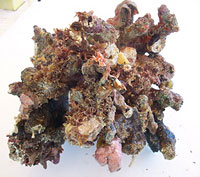

 | |||||||||||
|
|
Journals 2008/2009Zamaria Rocio
August 29, 2008
The divers went out again for a couple of hours. Hopefully today we would get a dead coral head. The request was for a certain species of coral, Pocillopora verrucosa. Laetista will be recording all invertebrates that are living in and on it. She will also do DNA bar coding on them. These will be sent to a laboratory for analysis. This morning I finally got an orientation to Laetista's research. I better understood what I would be doing while I was here.
Well, luck was on our side. After being here several days, we got a coral head. Laetista was going to show me the procedure for working up a coral head. Before we did this, it was placed in a large flow-through salt-water aquarium that got its water directly from the ocean at the research station's outside laboratory. We set up several small plastic containers with ocean water on a large table. These were to put our specimens in. We had two buckets that we filled about half way with water. One was to be used for rubble (broken pieces of coral and other bits) and the other was for finding the volume of the coral head. After we recorded its volume, we took a picture of it and started breaking it apart with a hammer and chisel. Care had to be taken when doing this or you would end up with parts of animals. 
Next we had to pick through the coral pieces removing all the invertebrates on and in the coral with the use of plastic spoons and forceps. Some of the crabs tried to escape but we were faster than them. They were separated into the small plastic containers. We were collecting mostly polychaetes, mollusks, crustaceans, and echinoderms. It was an easy job to do but a tedious one. 
These containers with specimens were brought back to the lab to get tissue samples from for the DNA analysis. Then the rest of the specimen was preserved in ethanol. The dead coral head that we worked through (the rubble) was put in a bucket and brought to the lab for Phil Bock, the bryozoan expert, to pick through. |
||||||||||

